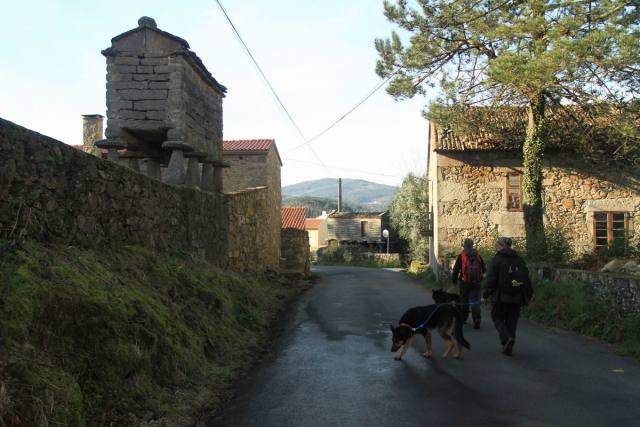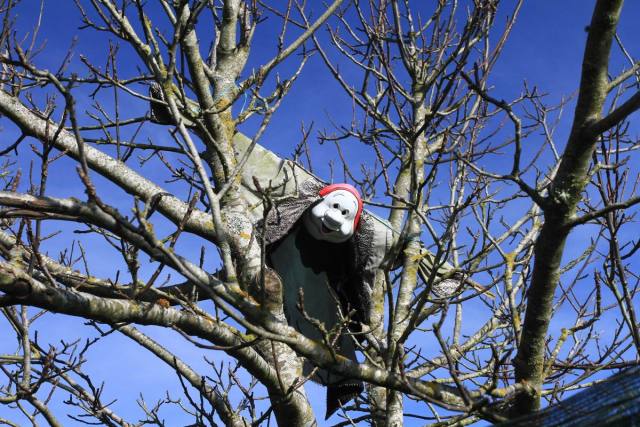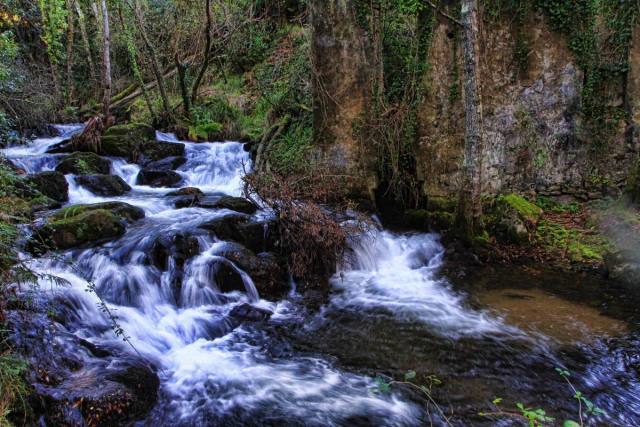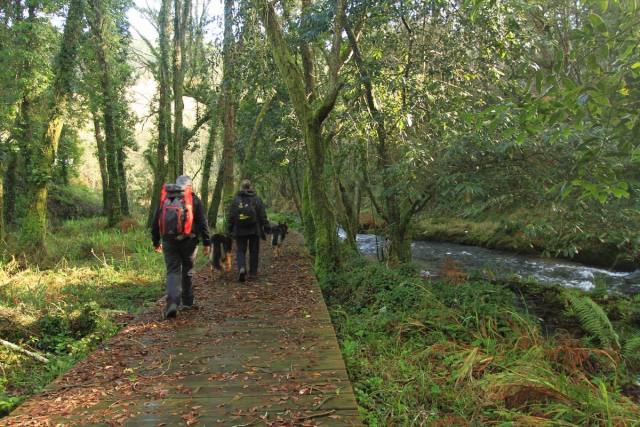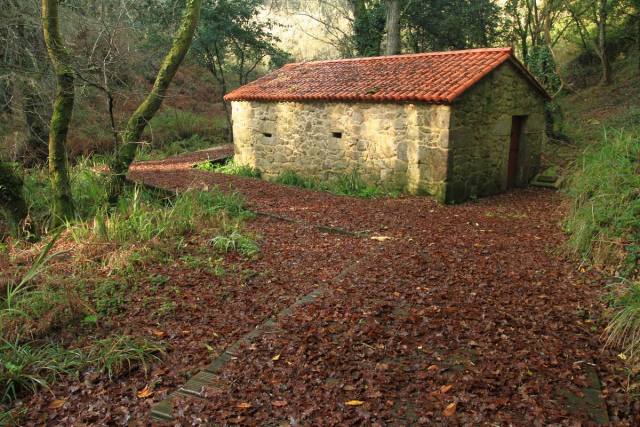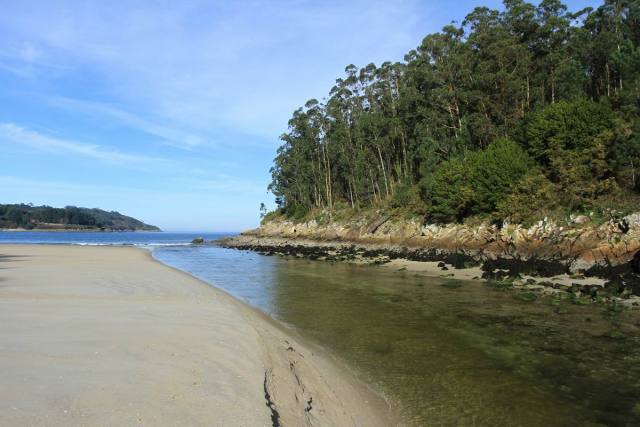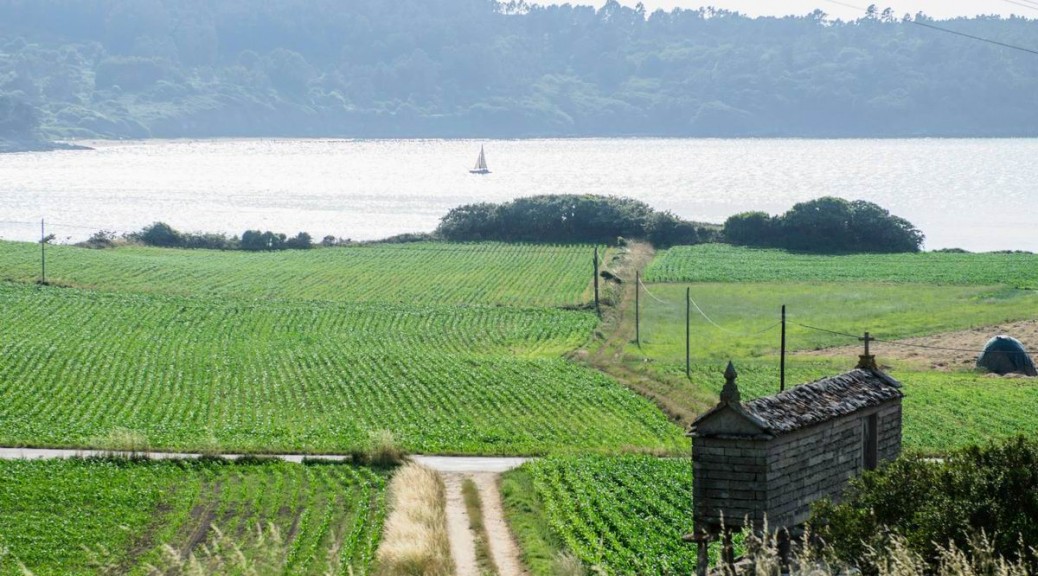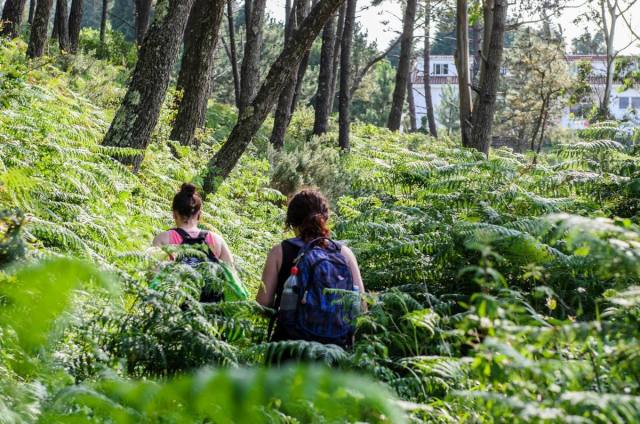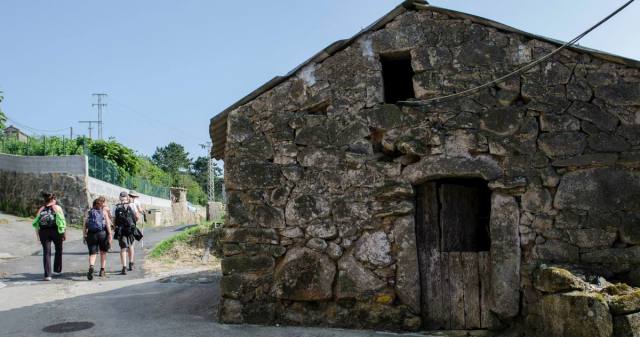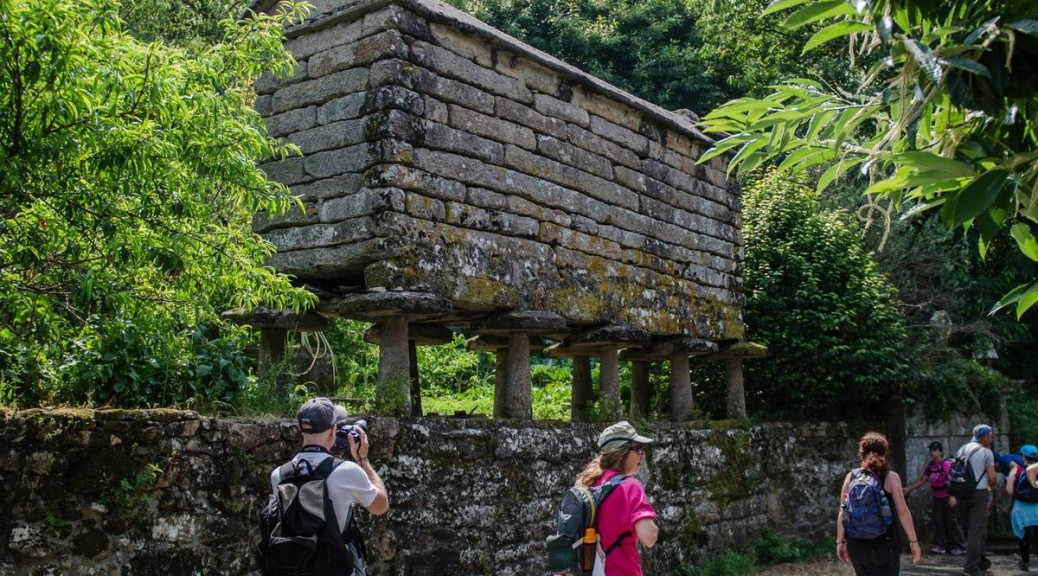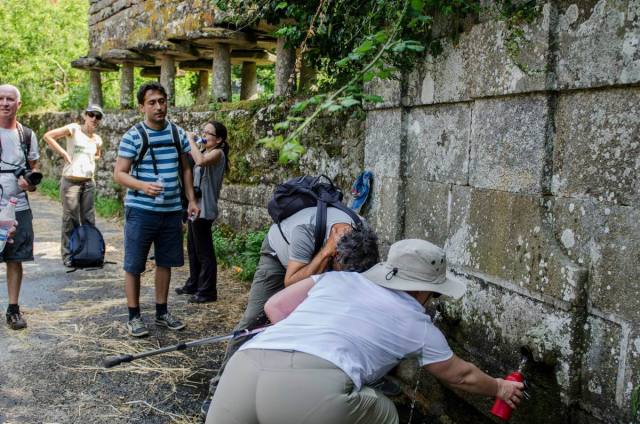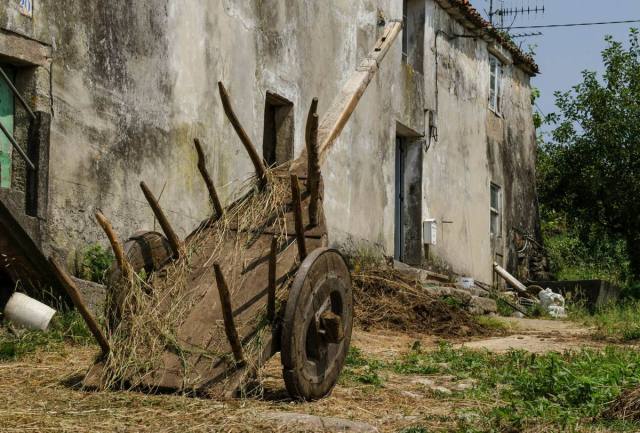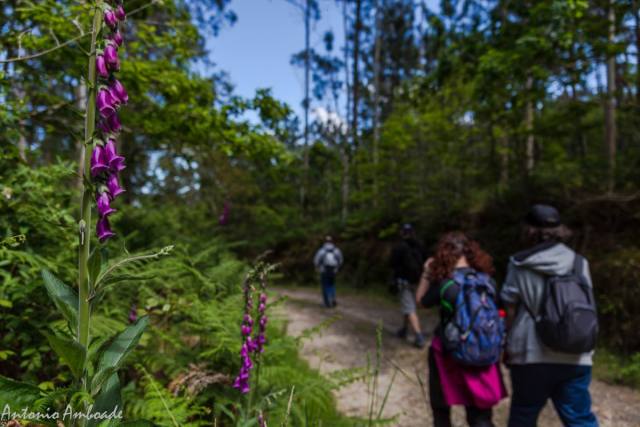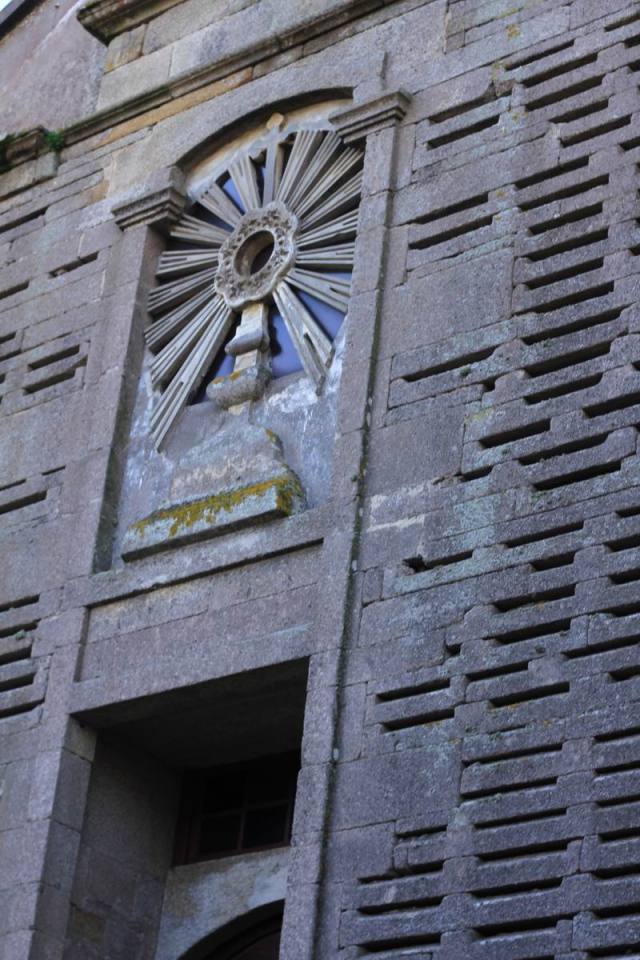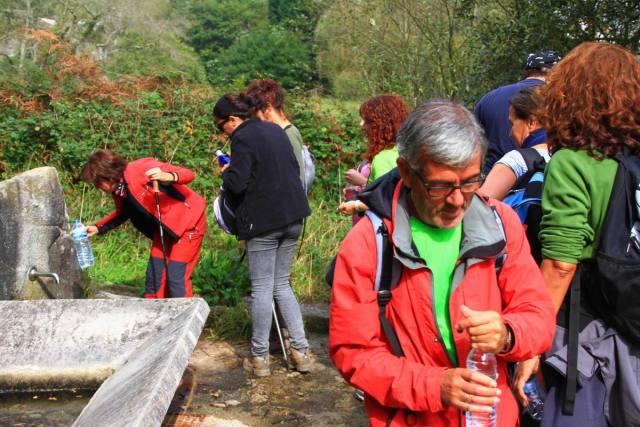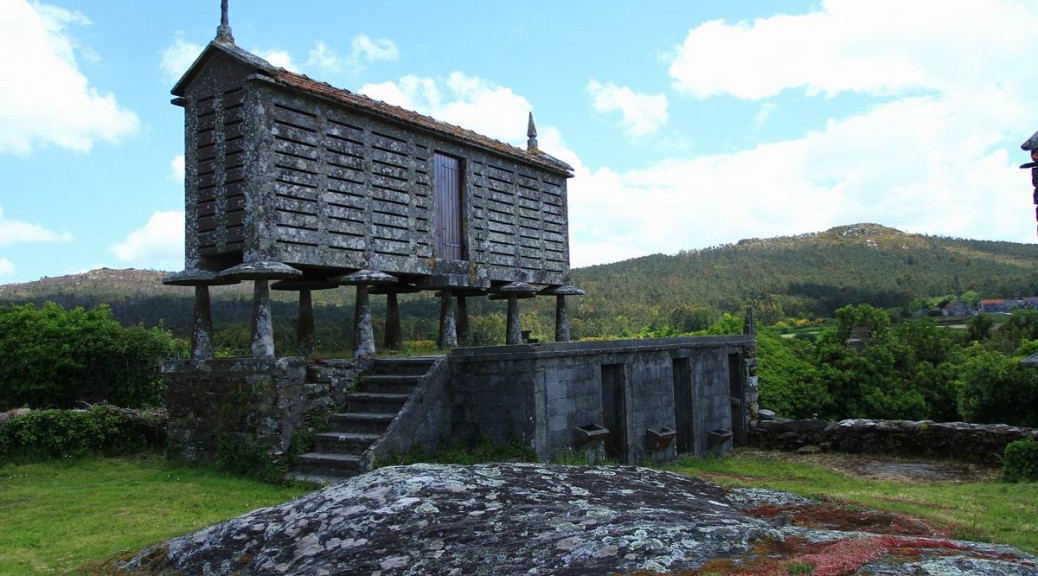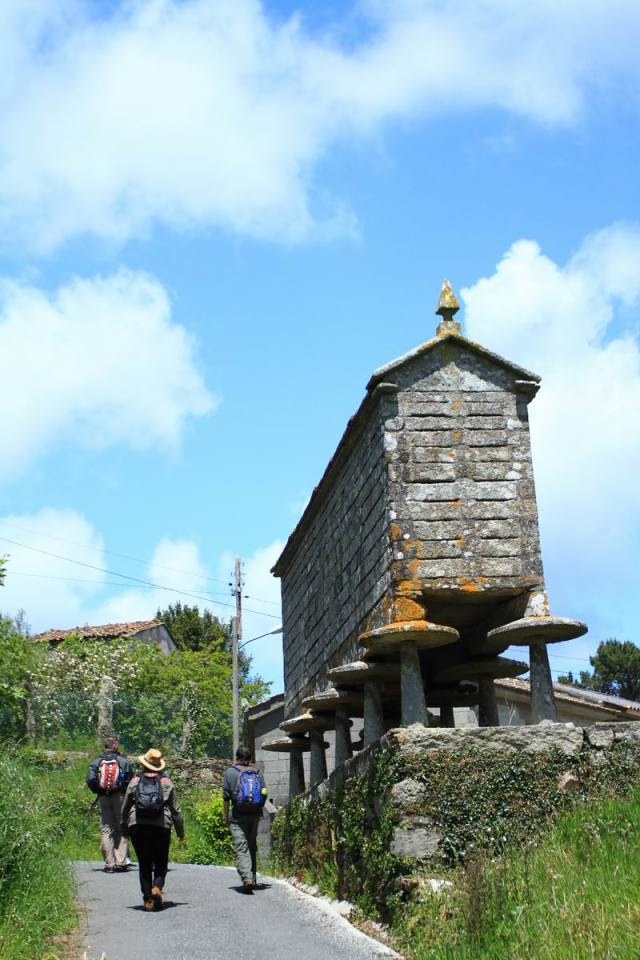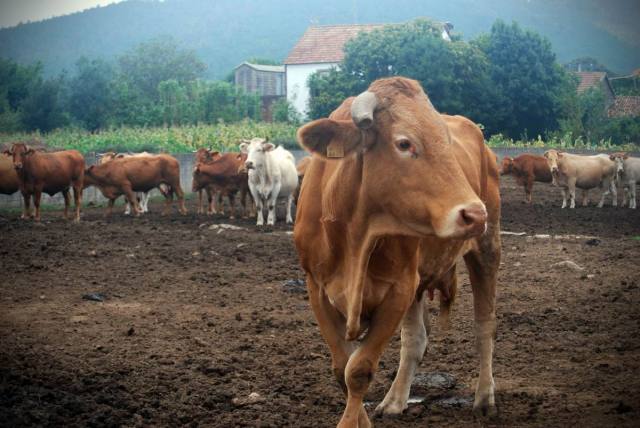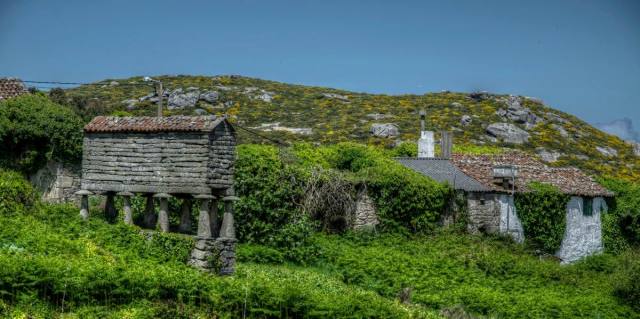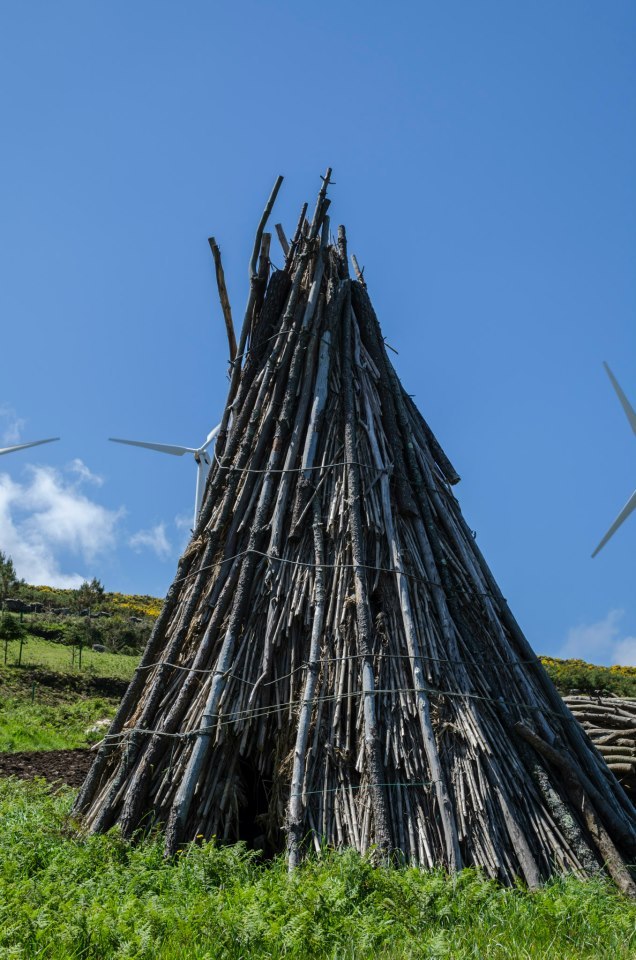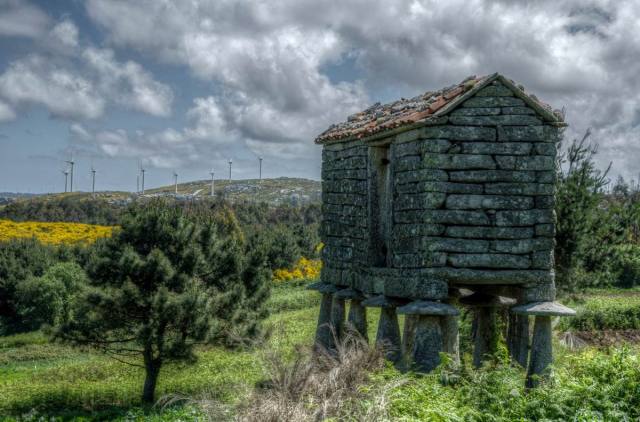Os Muíños is another typical village that is very well cared of in this Costa da Morte. We walk not only by “hórreos”, which are used to keep the harvest, but also by old stone houses looking for a turning point on the right that will take us close to the beach, one of the best ones in the municipality, by taking the route of the mills.
On our way to the mills, we see another of the wonders this Camiño dos Faros provides us with and we do love taking photos of,that is the scarecrow hanging from the trees, that gets surprised when it sees the Trasnos walking along this area.
The Route of the Mills of Río Negro is small and it is very well cared of. At the beginning of all the walk we see the Fonte da Tella (“the Fountain of the Tile”), a fountain with very fresh water and we will rest next to it. 50 meters up, the river descends forming a small waterfall on another unique spot.
Here we have to face again a problem we have dealt with in the previous kilometers. These boardwalks that are placed in shady places are full of moss and it is impossible to walk over them. However, we do it and although we do it very careful we don’t stop enjoying the beauty of this river Negro whose name matches the appearance of the place.
Along the walk we see several restored mills that in autumn, provide us with images like these ones …. As we have already said, O Camiños dos Faros, is a landscape in every step.
At the end of the route, in the mouth of the river, we descend some difficult steps to reach the beach of Os Muíños, one of the most visited in this municipality in summer. It is in a quiet bay and it has all the necessary services, which makes of this place the perfect spot to go with children.
As many of the beaches in this Costa da Morte, it is surrounded by some dunes with vegetation.
From this point, we have the option to visit the Monastery of Moraime and walk part of the St. Jame´s Way till Chorente. The other option, that is the one we follow in this Camiño dos Faros, is to go on by taking a path that is at the end of the beach and that will take us directly to Chorente by a steep hill.


